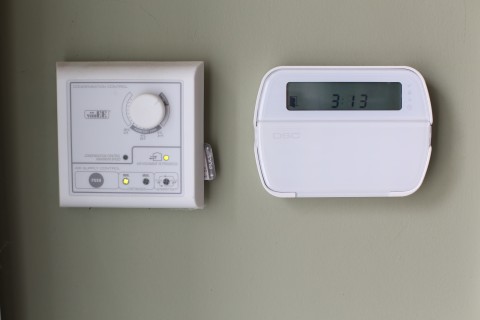Thermal Comfort Assessment of Two Semi-Detached Houses, Vaughan, ON
The thermal comfort of an indoor environment can be assessed through the experience of its occupants described by a set of predetermined criteria. Thermal comfort is defined by the American Society of Heating, Refrigerating and Air Conditioning Engineers (ASHRAE) as the state of mind which is satisfied with the surrounding indoor environment and is measured by ASHRAE Standard 55. Since Canadians spend up to 90% of their time indoors, achieving thermal comfort for building occupants is very important.
This study quantifies and assesses the thermal comfort of two semi-detached sustainable houses at the Living City Campus at Kortright, in Vaughan ON. The study took place in 2010 and monitoring took place in May and July for the heating and cooling seasons, respectively. Measurements were taken for ambient air temperature, radiant floor temperature, humidity and air velocity within one room per house. The two houses are similar in size but differ in their heating systems, as House A is heated and cooled by a variable capacity air source heat pump and House B is heated and cooled by a ground source heat pump. Although some standard criteria were not met unless a thermostat adjustment was made, it was found that on average, both houses meet the standards put forward by ASHRAE 55.

